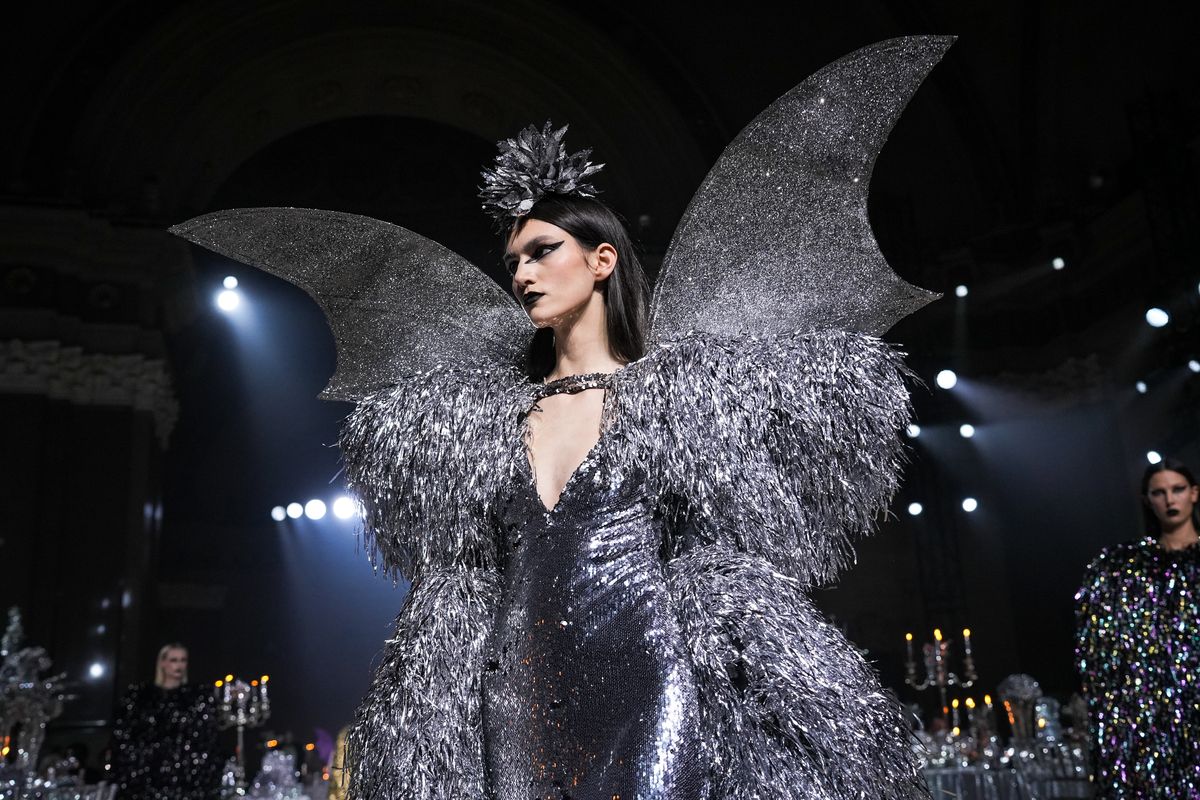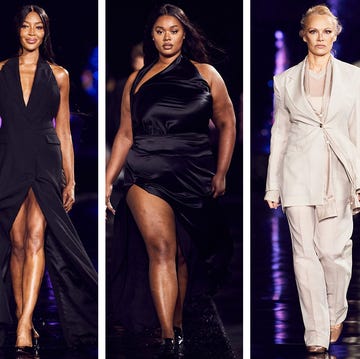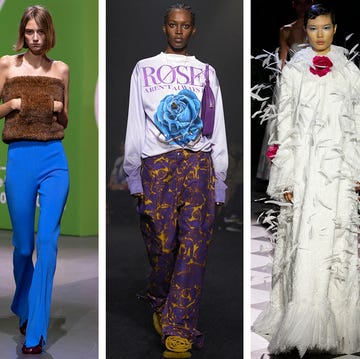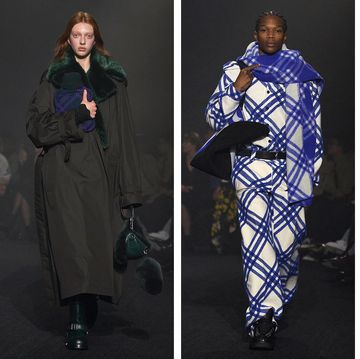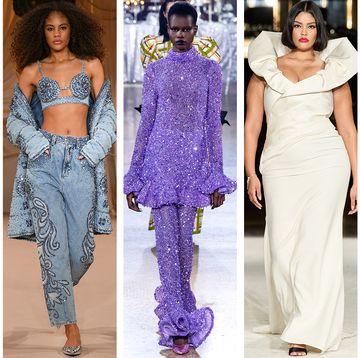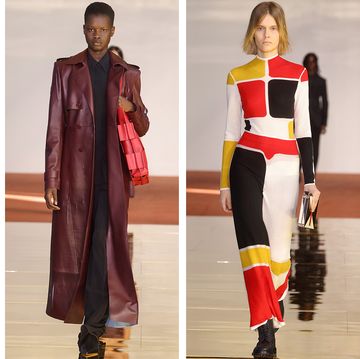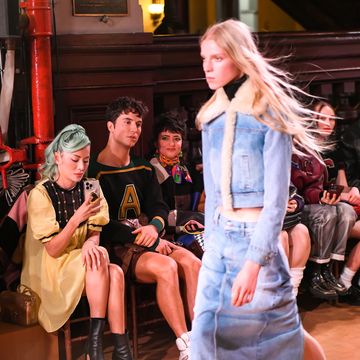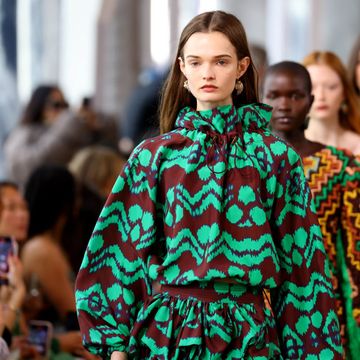Any teen movie about witches will tell you that magic has a cost. It’s true for Fairuza Balk in The Craft, The Worst Witch, and probably Almost Famous, too; because even though she’s not technically a sorceress, she does run smack into a pole while dressed like a rock ‘n’ roll Morticia Addams.
It’s also true for Kate and Laura Mulleavy, the Rodarte designers at the epicenter of fashion’s love-or-fear obsession with girlhood. The cost of their magic is twofold: Thanks to the dull thud of misogyny, amplifying the fierce softness of girl world will always come with detractors—even when some men make bank on eerily similar vibes. (Tellingly, The New Yorker called their clothes “inscrutable or a little bit ugly,” which one could also say about teen girls themselves.)
Which leads us to the other cost: girlhood itself is a trigger for many adults, especially those of us who were always told we were “too smart,” “too big,” and “too loud” too much. Being a young woman in America is violent, gleeful, brutal, beautiful, and exhausting. Being reminded of that vicious duality—and instructed via fashion to celebrate it—can bring up some very hard feelings. We can either engage with our younger selves by reclaiming pink bows and black lipstick as adults, or live soundly in the knowledge that we’ve finally grown up and can dress accordingly. (Which probably means a sharp jacket and soft jeans by Phoebe Philo, or at least a sharp jacket and soft jeans that we really want to be by Phoebe Philo in September 2023.)
Rodarte the brand turns 18 this year, and the Mulleavy sisters are now cool, hot women in their 40s. They have rich adult lives to rival, or at least mirror, the famously rich inner world that powered their earlier designs. And to paraphrase Johnny Cash, eventually the kids grow up. What happens now?
“I think the key is to take things from the past and try to imagine them in the future,” Kate Mulleavy tells ELLE.com just after the brand’s fall/winter 2023 show. The label harnessed fantasy archetypes like fairies, butterflies, princesses, goddesses, and oracles. (Honestly, I think I glimpsed the alien from Arrival in there, too.) Then they transposed them from movies and Muppets onto some of the most beautiful girls in New York.
The effect was hypnotic and dissonant, as if Glinda the Good Witch decided to cosplay as a troll, but couldn’t stop glowing. Throw in a series of goth Wednesday looks and a Tori Amos soundtrack, and you had a teenage dream for all generations. (Molly Ringwald was front row; so was The Avenger’s newest young wonder, Kathryn Newton. So, yeah, literally.)
“Laura and I were like, ‘This collection is about who we were in the ’90s,’ but with the perspective of now,” adds Kate, citing Amos’ music—which was threaded through the show—as an example. “Tori Amos was life-changing for us,” she says. “As teens, but also now. She really inspired us to find the basic understanding of the collection through her soundscape. Her album really pushed us through to the end.” But not because the songs resonated the same way they did all those years ago. In fact, says Kate, it’s the opposite: “As you grow, the music grows with you. These [clothes] can do the same.”
That effect—same same but different, if you will—carried through in some signature spiderweb dresses, first shown on models in 2008, and now expanded into longer bejeweled versions. It also landed in the audience, where OG brand fans like Natasha Lyonne and Shirley Kurata posed with newer recruits like Rowan Blanchard and Beanie Feldstein. Tavi Gevinson was there, too, like a living avatar of girlhood gone right. Even so, while the front row was a delightful rainbow of celebrity misfits, the models were all the same super tall, super thin, super young sylphs. A throwback to the ’90s indeed, though also kind of a bummer—especially for those of us (definitely me) hoping to look more like the smart, cool Mulleavy sisters themselves than a flaxen wisp.
As Rodarte moves forward, the brand has become more visible on mainstream shopping sites like Net-a-Porter and Mytheresa, plus major department stores like Neiman Marcus and Bergdorf Goodman. That means women who shop like adults and not art collectors can more easily discover the label; it also means you have a better chance of buying the collection on sale. Rodarte has also continued its red carpet domination (the latest is Florence Pugh) and leaned back into its core style codes with the freedom and ease that most women who’ve hit their stride can recognize.
“The most fun you have and the most creative you are is when you’re in the voice of who you are as a designer,” says Kate. “This collection really speaks to that. You never think your work is done, to be honest. The conversation is never over. You’re always on a journey with what you’ve made, and what you’re making, and what you imagine making. You never stop thinking, ‘Every idea should be better. Every piece should be better...’”
Kate and Laura both pause mid-sentence to wipe smears of silver glitter off their faces (it covered the entire show set, including bejeweled bananas) and apologize for the downside of fashion week magic: “We are so tired,” Kate confesses. “I was literally going to tell you one more thing, but the words are gone. Are you still staying up all night during fashion week? Who can do that?!”
Teenage girls can. But we are not them; not anymore.

"Her beauty and her brain go not together." —William Shakespeare
